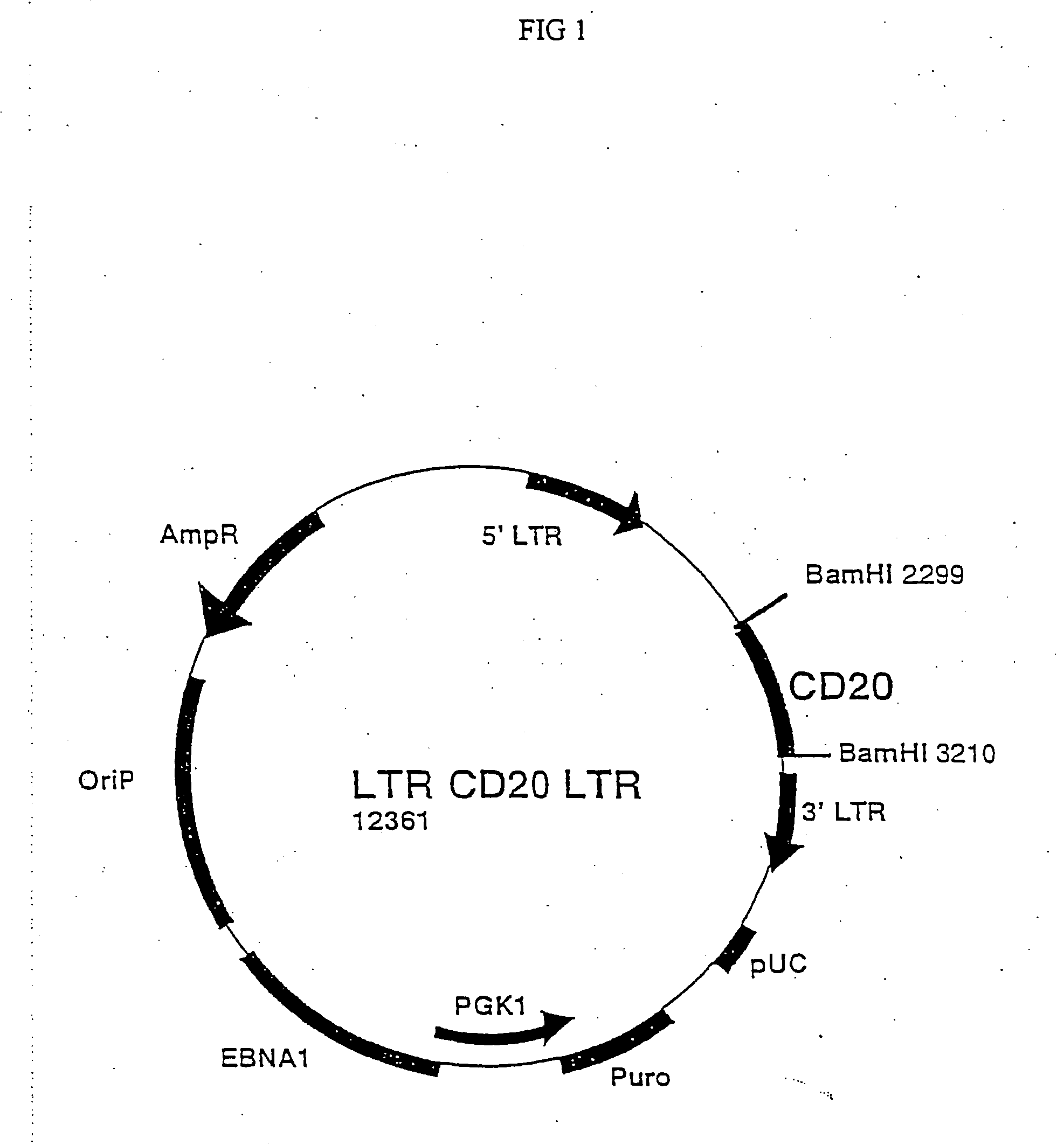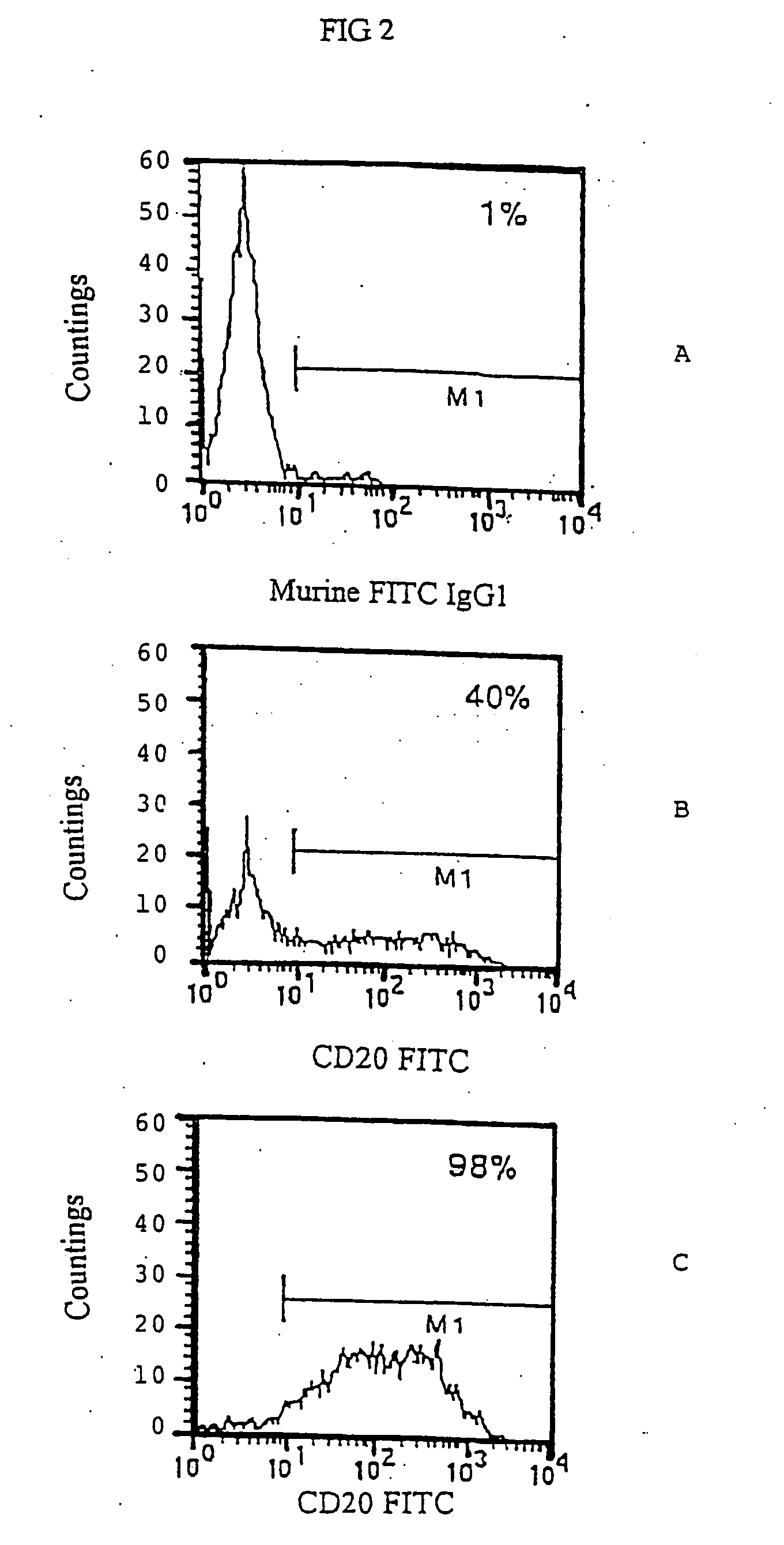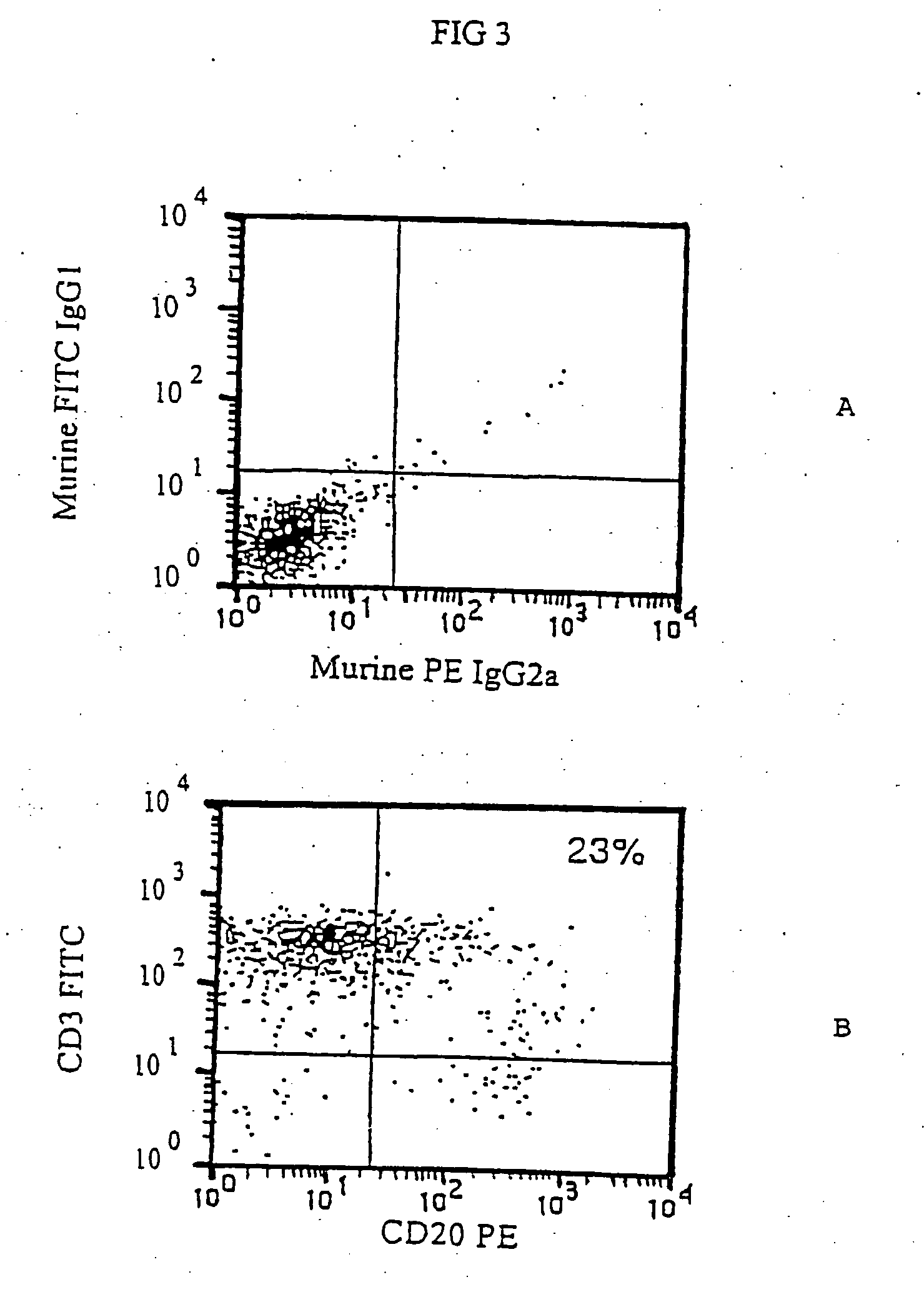Use of antibodies against CD20 for the treatment of the graft versus host disease
a technology of graft and host disease, which is applied in the direction of antibody medical ingredients, immunological disorders, drug compositions, etc., can solve the problems of inability to pharmacologically separate these two aspects, many toxic effects of transplants, and inaccessibility to patients
- Summary
- Abstract
- Description
- Claims
- Application Information
AI Technical Summary
Benefits of technology
Problems solved by technology
Method used
Image
Examples
example 2
Transfection of the LTR-CD20-LTR Plasmid in the Packaging Cells
[0032] In order to produce retroviruses, the packaging cell Phoenix-Ampho was transfected with the LTR-CD20-LTR plasmid.
[0033] The Phoenix-Ampho cells are derived from the human embryonic kidney 293 cell line following several modifications; initially they were transfected with the E1A gene from adenovirus and then transfected with two separate plasmids coding for the structural genes gag and pol from Moloney MLV under the control of Rous sarcoma virus promoter and the env gene from Moloney MLV under the control of cytomegalovirus promoter.
[0034] 1.5×106 cells were plated on day −1 in a Petri dish of 10 cm diameter in 10 ml DMEM medium (Gibco, Seromed, Berlin, Germany) added with 10% FCS (Hiclone Laboratories, Steril System, Logan, UK) and kept in 5% CO2 incubator at 37° C. On day 0 16 μl chloroquine were added (stock solution 25 mM in PBS) and after 10′ 1 ml solution of 10 μg plasmid DNA was added. To obtain such DN...
example 3
Infection of the CEM Cell Line with the LTR-CD20-LTR Retrovirus
[0038] 1×106 human T lymphoblastoid CEM cells growing in suspension in RPMI 1640 medium supplemented with 10% FCS and glutamine, were pelleted by spinning at 1200 rpm for 8′ in a flat bottom well of a 24 wells plate (Falcon, Becton Dickinson and Company, N.Y.). After removal of the supernatant, 1 ml of the viral supernatant was added by filtration through 0.45 μm filters (Millipore Corporation Bedford, Mass.) in the presence of 1 μl Polybrene (stock solution 4 mg / ml in PBS).
[0039] The plate was then centrifuged for 45′ at 1800 rpm at room temperature and then the supernatant was removed and replaced with 1 ml fresh RPMI 1640 added with 10% FCS and subsequently incubated for additional 6 hours.
[0040] At the end of the incubation the infection procedure was repeated a second time using a different Petri dish of packaging cells previously prepared.
example 4
FACS Analysis of CD20+CEM
[0041] CEM cells following retroviral infection with LTR-CD20-LTR were kept in the incubator and normally grown in RPMI 1640 medium added with 10% FCS. After 2 days the CEM cells could already be assayed by immunofluorescence analysis for the presence of the CD20 marker on the surface.
[0042] 0.1×106 cells were transferred in an 1.5 ml Eppendorf tube, spun at 4,000 rpm for 3′, resuspended in 50 μl of a solution of fluorescent anti CD20 1F5 antibody (Becton Dickinson) and kept for 30′ at 4° C. At the end, 500 μl of a solution 0.9% NaCl, 5% FCS, 0.02% Na Azide were added and cells were spun at 4,000 rpm for 5′. After that, the sample was resuspended in 100 μl of PBS solution containing 1% formaldehyde and then kept at 4° C. until reading at the fluorocytometer.
[0043] In many experiments this infection procedure always gave CEM CD20+cells in varying percentages from 30 to 60%, while the non infected cell line was completely negative for the CD20 expression (...
PUM
| Property | Measurement | Unit |
|---|---|---|
| volume | aaaaa | aaaaa |
| pH | aaaaa | aaaaa |
| pH | aaaaa | aaaaa |
Abstract
Description
Claims
Application Information
 Login to View More
Login to View More - R&D
- Intellectual Property
- Life Sciences
- Materials
- Tech Scout
- Unparalleled Data Quality
- Higher Quality Content
- 60% Fewer Hallucinations
Browse by: Latest US Patents, China's latest patents, Technical Efficacy Thesaurus, Application Domain, Technology Topic, Popular Technical Reports.
© 2025 PatSnap. All rights reserved.Legal|Privacy policy|Modern Slavery Act Transparency Statement|Sitemap|About US| Contact US: help@patsnap.com



